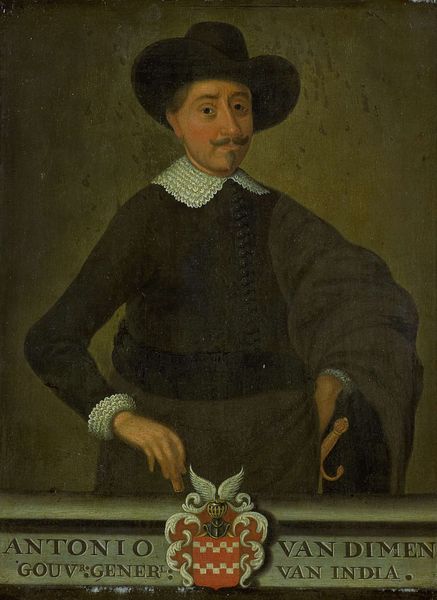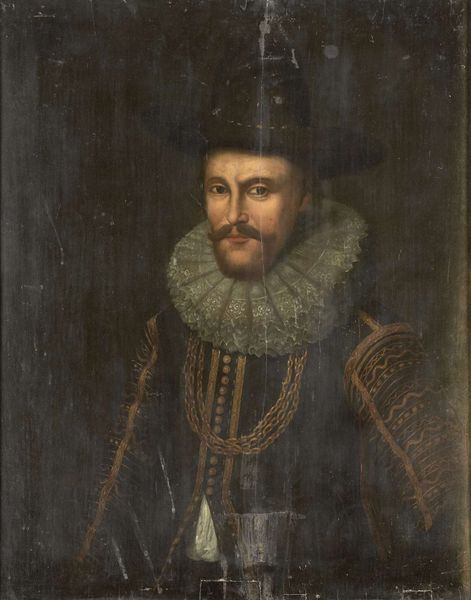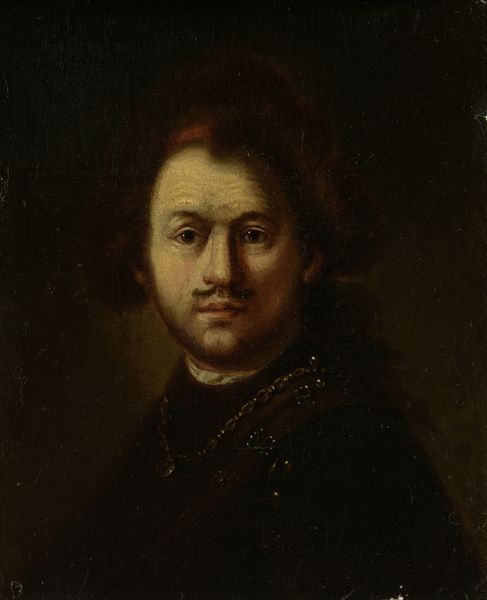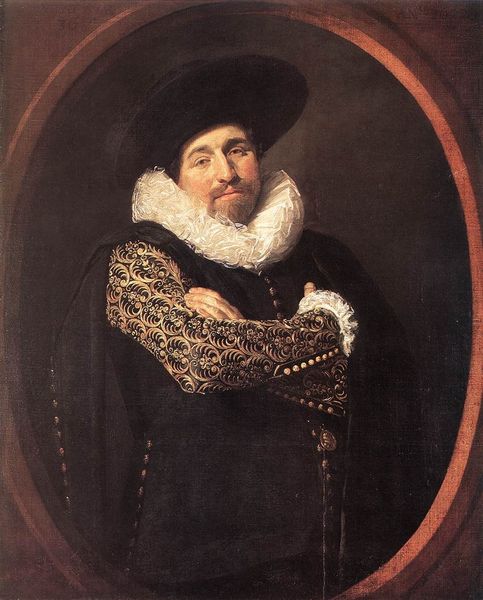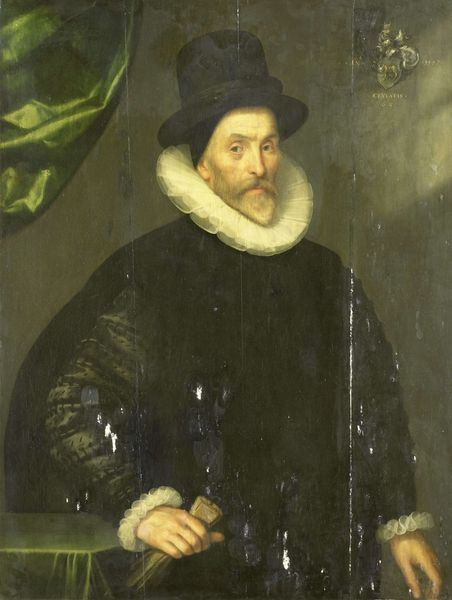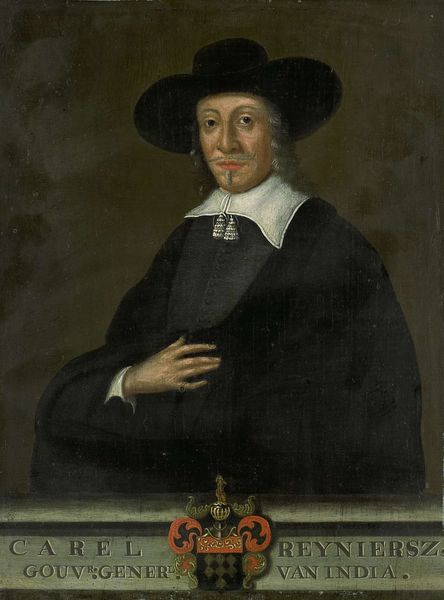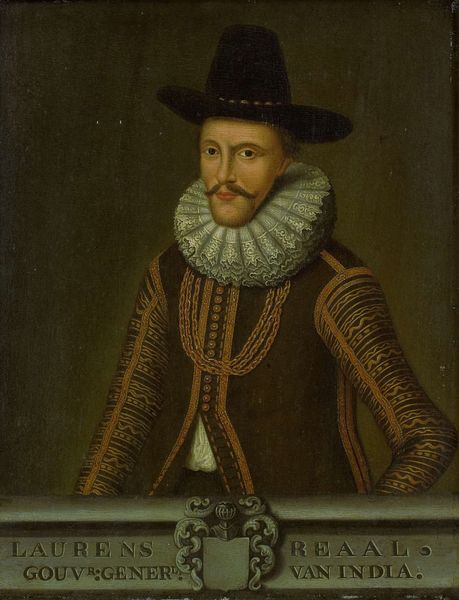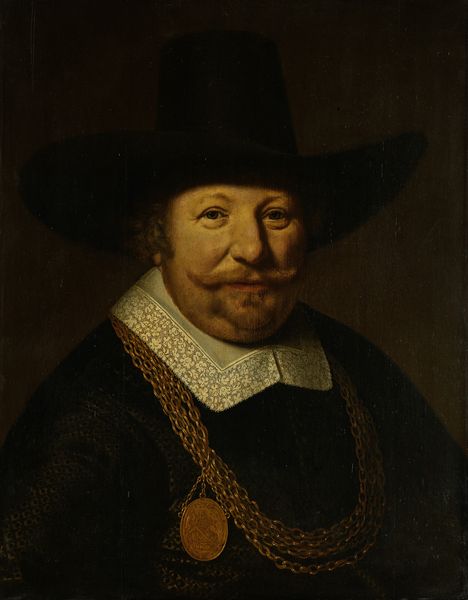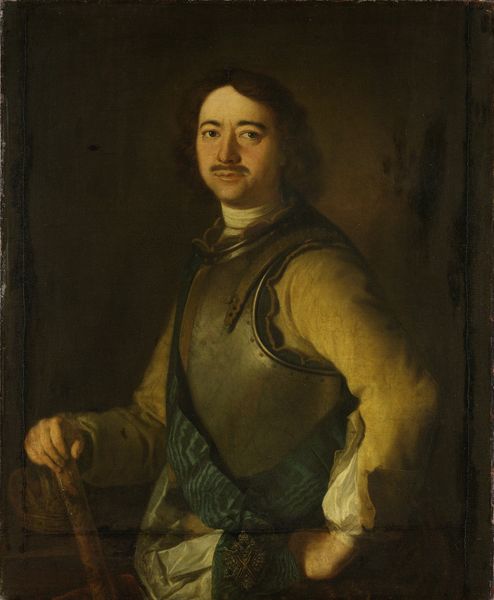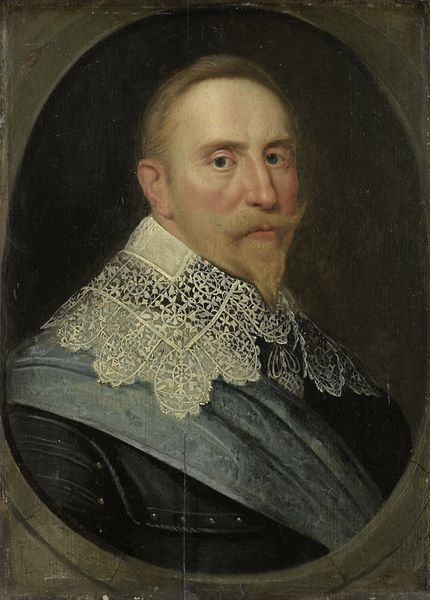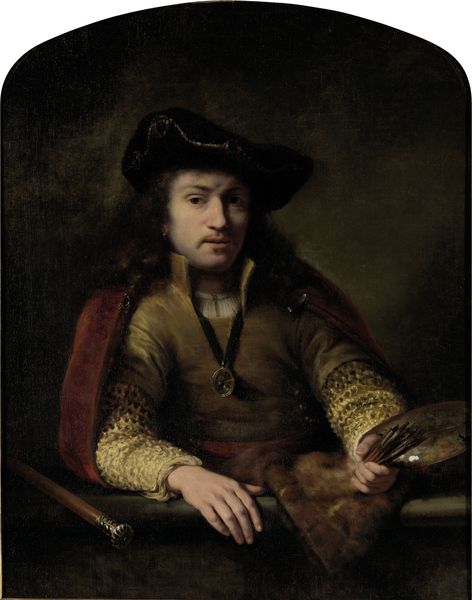
Portrait of Cornelis van der Lijn, Governor-General of the Dutch East Indies 1645 - 1675
0:00
0:00
painting, oil-paint
#
portrait
#
baroque
#
portrait
#
painting
#
oil-paint
#
history-painting
Dimensions: height 97.5 cm, width 78.7 cm, thickness 3.6 cm, depth 8 cm
Copyright: Rijks Museum: Open Domain
Editor: Here we have a portrait, presumably rendered in oil paint, of Cornelis van der Lijn, who once served as Governor-General of the Dutch East Indies, dated sometime between 1645 and 1675. It definitely gives off an air of authority, perhaps even a touch of sternness. What can you tell us about the historical context that shaped this painting? Curator: Absolutely. What immediately strikes me is how this portrait functions within a network of power and representation. Van der Lijn, as Governor-General, embodies the Dutch colonial project. The very act of commissioning this portrait served to solidify his status and project Dutch power. It's interesting to consider how the painting was likely displayed. Editor: Where would a portrait like this have typically been placed? Curator: Most likely in a public setting, a government building, or perhaps even in Van der Lijn's private residence as a statement of his position. Think about its audience; it wasn’t just for personal enjoyment. The portrait communicated a specific message about Dutch authority. Notice the sash: do you recognize the colors or its pattern? It suggests rank and importance. Also, look at his pose; how does it contribute to the overall message? Editor: I hadn’t thought about it that way before. He seems intentionally posed to appear both dignified and commanding. I guess I never considered what the institution and culture had to do with it! Curator: Exactly. Consider how the Baroque style itself, with its emphasis on grandeur, contributed to the overall impression of power. It underscores the complex relationship between art, politics, and colonial power. So, how does knowing his place in the political echelon inform your reading of the portrait? Editor: It gives it a whole new dimension. It is no longer just a likeness but also propaganda! This helps me look critically at what the artist decided to include. Thanks!
Comments
No comments
Be the first to comment and join the conversation on the ultimate creative platform.

